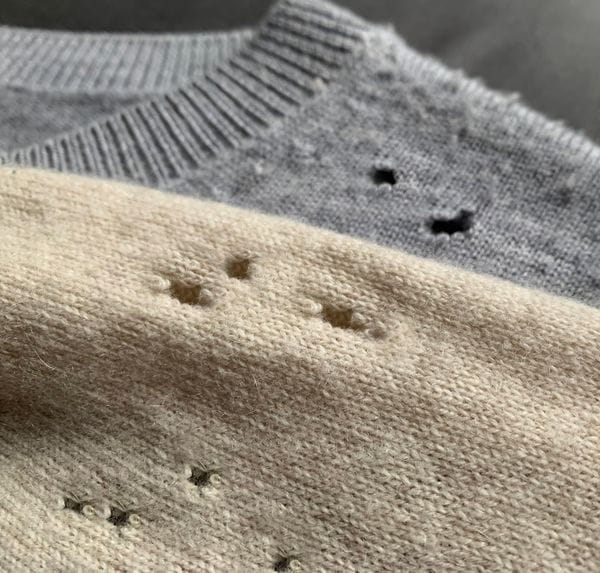Use Cedar or Lavender: Cedar wood and lavender are natural moth repellents. Storing woolen garments in cedar-lined closets or using sachets of dried lavender can help deter moths.
Clean Before Storing: Always ensure that woolen garments are clean before storing them for the season. Moths are attracted to human sweat, food stains, and other organic materials that may be left on the fabric.
Use Breathable Garment Bags: Store woolen items in breathable garment bags made of cotton or linen, which allow air circulation while protecting against moths and dust.
b. Regular Maintenance:
Brush Regularly: Regularly brushing your woolen garments can remove eggs or larvae before they cause damage.
Freeze Them: If you suspect a moth infestation, you can place your garments in a sealed plastic bag and freeze them for a few days. This will kill any eggs or larvae.
c. Environmental Control:
Keep Storage Areas Clean: Regularly vacuum and clean closets, drawers, and storage areas to remove any larvae or eggs. Pay special attention to corners and dark areas where moths are likely to lay eggs.
Control Humidity: Use dehumidifiers in storage areas to keep humidity levels low, as moths thrive in humid environments.
3. Repairing Damaged Garments
a. Darning:
Traditional Darning: Darning is a traditional method of repairing holes in fabric by weaving a new patch of fabric over the hole. This can be done with matching wool yarn to create a nearly invisible repair.
Invisible Mending: For more delicate or valuable garments, professional invisible mending services can repair holes without leaving any noticeable marks.
b. Patching:
Patching from the Inside: Small holes can be patched from the inside using a small piece of matching fabric. This method is less visible than darning but may not be suitable for larger holes.
c. Reweaving:
ADVERTISEMENT
